Field Review: Retra LSD Prime snoot
INTRODUCTION.
Before you skip this article and ignore Retra’s LSD Prime, claiming you’re bored of snoots, it is important to remember that they are photographic tools for far more than just creating spotlights in macro pictures. I’ll get to this below.
This review is focused on Retra’s new, lower cost, LSD Prime (LSD = Light Shaping Device) that went on sale this week (or as Adam cheekily titled the news item “Retra sells Prime LSD”, or something like that). But I’ll also use this article as an opportunity to discuss some of the types of images that snoots can be used for and techniques I use for making these images easily and effectively.

RETRA Underwater Technology are a relatively new name in underwater photography, but have already garnered a reputation for producing high quality and original products. With a strong following in the European competition circuit, Retra LSD snoots have been dominating the podiums of Fotosub (on the day style) contests and have already claimed a gold medal for Slovenia in the macro category of the official CMAS World Championship of Underwater Photography in the hands of Rok Kovacic.
As many readers probably don’t know them, I’ll make the introductions. Retra are Oskar Music, Jure Novak and Luka Mali, and while readers from outside of Europe might struggle to pinpoint their Mediterranean country of Slovenia on the map, it is located in a rich belt of European underwater photography bordering both Austria and Italy.
HOW IT WORKS.
Few would doubt that the current passion for snoots in underwater photography was inspired by the ground-breaking images of Keri Wilk. I didn’t know Keri five years ago, but I was a judge at several of the major competitions where he swept the board. I remember in one of the Wetpixel/DPG/OWU Contests saying during the judging that I didn’t care which of his snooted shots won the macro category, as long as one of them did, so much did they stand out!
Keri deserves particular praise for going on to share his trade secrets in a now classic reference article on DivePhotoGuide, to which I am proud to have also contributed some images. It was his eye catching photos of macro subjects isolated in spots of light on rich black backgrounds that particular entranced our community.
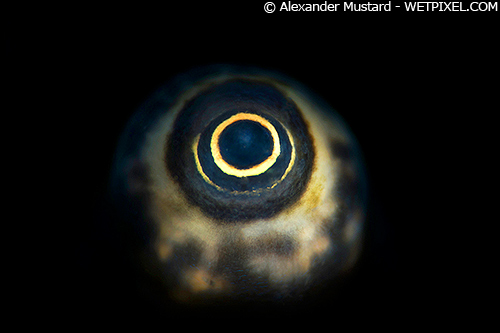
Keri used a relatively simple tube or funnel type snoot to produce that inspirational portfolio. Those snoots worked by blocking the light from a strobe until only a pinpoint remained. There were two main problems, first the snoot had to be positioned very close to the subject to maintain the small point of light and second being a reductive snoot, most of the power output of the strobe was wasted. As a result many of Keri’s shots were taken at night, to avoid the daylight overpowering the spotlight.
This is where Retra comes in. Their LSD snoots don’t reduce the light from your strobe, but focus its power into a collimated beam, providing both a greater working distance and more power. Allowing us to shoot those rich black backgrounds, even in the middle of the day. Note that for the conch eye, above, I could shoot at f/22 at ISO 200 (and 1/320th) therefore eliminating all daylight easily from my shot, despite being on shallow, white sand under the Caribbean sun.
For a bit more on the theory of Retra’s LSD, I refer you to the Wetpixel review of the LSD Pro by (yet another) Slovenian underwater photographer Borut Furlan, who also helped in the development of the product.
As I said, the LSD Pro has been popular amongst European Fotosub photographers, but the relatively high price (600 Euros, including taxes) has restricted its appeal. This is the motivation for the LSD Prime, which at 349 Euros, including taxes, is aimed at appealing to a mainstream audience. Both versions use the same lens technology, the cost savings come from the cheaper LSD Prime being is a slightly less elegant design, without the very high quality of finish of the Pro. I found the Prime version to be a little less light efficient than the Pro versions too. Nonetheless it is still a quality item and feels close to indestructible. (Since both LSDs use the same lens technology, I have used images from both to illustrate this article).
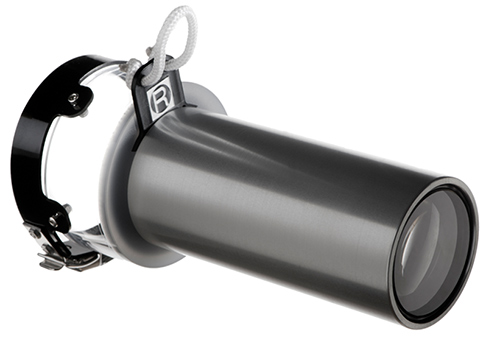
Another major advantage of an optical snoot is that the collimated beam allows you to use different shaped apertures to change the cross sectional shape of the beam. The LSD Prime is supplied with 13 standard shapes for modifying the light beam (the more expensive Pro comes with 8). The most useful are the different sized circular apertures, which simply change the size of the beam. Some of the more obscure shapes are very contrived, but certainly have a role in competition photography, where judges often reward “demonstrable creativity”! It would be relatively straightforward for any user to make their own insert too, and Retra offer to cut additional shapes you might fancy.
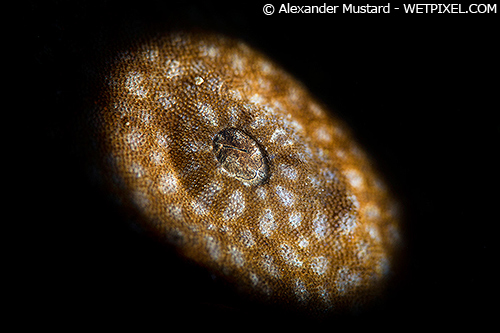
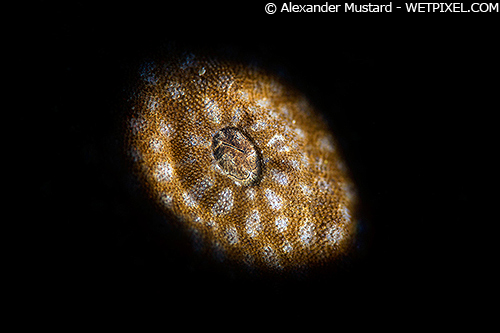

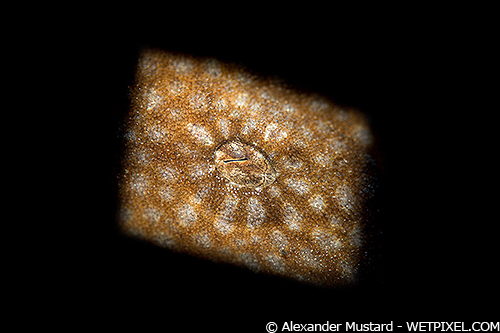
The sharpness of the projected shape is determined by the distance of the LSD from the subject. If the snoot is too close to the subject you will not get even illumination within the beam. Once the working distance is reached, then the shape of the beam will be sharply in focus and evenly illuminated. Further away, and the edges of the shape become less sharply defined, but the illumination remains even: this is defined at the useful range. My shots above were taken with the strobe slightly further away than the working distance (I didn’t want to spook the shark), but well within the useful range, so are not as sharp edged as is possible.
There is a nice, clear graphic of the beam in Borut Furlan’s review, and if you dive with the LSD at night and you can clearly see this for yourself as the strobe’s aiming light shines through the LSD and water.